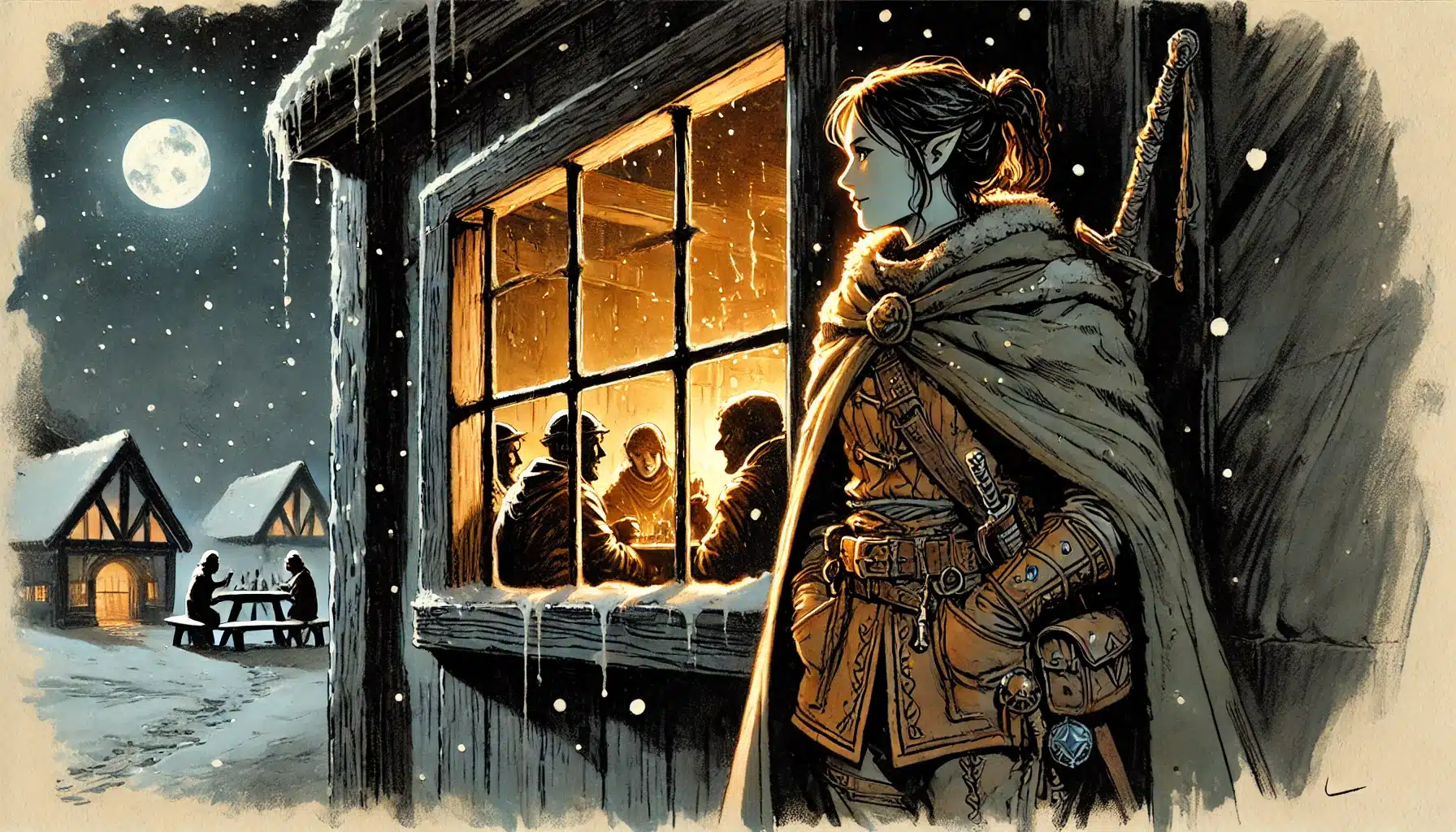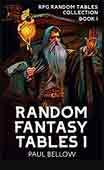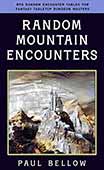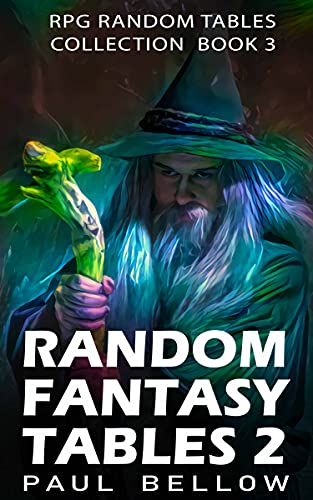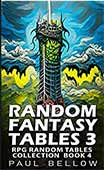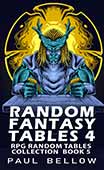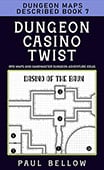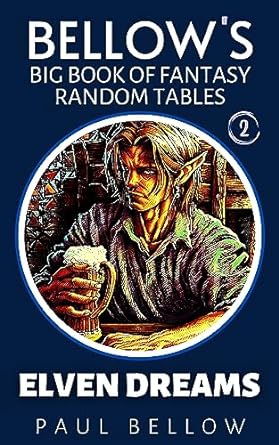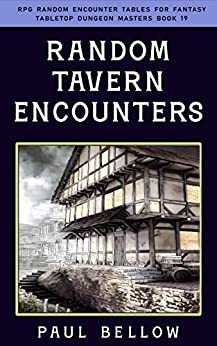The Ranger, a cornerstone of wilderness adventure, emerges from the rugged terrain of Dungeons & Dragons 5e as a paragon of survival and mastery over nature. Imagine a character as at home in dense forests and expansive deserts as others might be in bustling cities—a true wild heart beating in sync with the rhythms of the natural world. Rangers are adept hunters and skilled trackers, combining martial prowess with a dash of druidic spellcasting. This versatility positions them uniquely between the raw combat effectiveness of Fighters, the cunning agility of Rogues, and the natural magic affinity shared with Druids.
Historically, the Ranger has faced criticism for being underpowered, especially in earlier editions. Yet, with the advent of recent supplements such as Tasha’s Cauldron of Everything and upcoming One D&D changes, the class has been revamped with expanded abilities, optional class features, and alternative spells that bolster its earlier weaknesses. No longer just the quintessential “wilderness warrior,” today’s Ranger is a flexible battlefield controller and utility spellcaster, eager to step into any adventure with renewed vigor and effectiveness.
Central to the Ranger’s core identity is its adaptable combat style, incorporating both ranged and melee tactics. With access to utility spells like “Hunter’s Mark” and “Pass Without Trace,” they enhance their allies’ effectiveness while making the most of their surroundings. Moreover, the Ranger’s exploratory power—thanks to features like Favored Enemy and Natural Explorer—enriches narratives steeped in exploration and survival. This guide aims to uncover the profound depths of the Ranger’s abilities, offering insights to optimize and inspire.
Whether you wish to hone skills as a marksman, wield dual weapons with lethal efficiency, or pursue a more mystical path in conjunction with beasts and the wilderness, the Ranger’s subclass options cater to a spectrum of playstyles. As we delve deeper into this guide, expect a comprehensive examination of the mechanics, race and background optimizations, as well as an exploration of the vast tactical and roleplaying landscapes the Ranger has to offer. Prepare to embrace the wild. The adventure awaits.
Core Mechanics of the Ranger
The framework of the Ranger class in D&D 5e is intricately designed around their role as versatile warriors and nature’s guardians. They thrive on a foundation of dexterity, observation, and an intrinsic connection to the natural world. From the moment they step foot into the wilderness, they are equipped to handle myriad challenges—from battling monstrous threats to navigating treacherous terrains. The Ranger’s core mechanics shape their journey and highlight the duality of martial prowess and spellcasting, enabling them to adapt to various playstyles.
Rangers excel in a balance of combat and support roles, offering a rich tapestry of abilities that intertwine seamlessly with their environment. Their spellcasting, though not as expansive as that of a full caster, is nonetheless impactful, emphasizing utility and augmenting their martial prowess. Spells such as “Hunter’s Mark” optimize their damage output, while “Pass Without Trace” ensures stealthy exploration, proving invaluable in both combat-heavy and exploration-focused campaigns. Rangers may not wield the raw power of a Fighter or the stealth of a Rogue, but their strength lies in versatility and adaptability.
Try my AI Tabletop RPG generators...and an extensive library of content!
Level progression for Rangers is thoughtfully structured, with abilities scaling at appropriate intervals to ensure continuous relevance. Starting with a d10 hit die, they possess robust survivability, complemented by proficiencies in light and medium armor, shields, and a broad selection of weapons. As Rangers level up, they gain access to unique features such as Favored Enemy and Natural Explorer—abilities that, while beneficial in exploration, have been refined in recent updates to better align with dynamic gameplay and narrative.
One of the vital elements of being a Ranger is the stealth afforded by their connection to the wilderness. This connection extends beyond mere survival; it shapes their very identity. Features like Primeval Awareness serve as a bridge between the Ranger and their surroundings, offering a sixth sense that helps detect nearby threats. These mechanics are complemented by their subclass abilities, each enhancing specific aspects of the Ranger’s inherent capabilities and tailoring the class to suit various player preferences and campaign settings.
Lastly, the Ranger’s diverse skill set and feature options offer players abundant opportunities to customize their characters. With access to skills like Perception, Stealth, and Survival, they are equipped to tackle a range of tasks. As we delve further into this guide, we’ll explore how ability score distribution, subclass choice, and strategic feature selection amplify the Ranger’s role and impact within a party.
Ability Scores and Stat Priorities
When crafting a Ranger, understanding the allocation of ability scores is critical to maximizing their potential across different builds. The core competencies of the class lie chiefly in Dexterity and Wisdom, though certain builds may prioritize Strength or Constitution depending on their combat style focus. Dexterity enhances ranged attacks and improves Armor Class (AC), while Wisdom supports spellcasting capabilities and important skills like Perception and Survival.
⚔️ Fantasy RPG Random Tables Books
Make life as a Gamemaster easier…
If you play Dungeons & Dragons, Pathfinder, or other fantasy RPGs, this
RPG random tables series
is packed with encounters, NPCs, treasure, and more. Available in eBook or print—either way, you’ll have a wealth of adventure ideas at your fingertips.
For those favoring a ranged approach, a build focusing on Dexterity (Dex) and Wisdom (Wis) is advisable. This combination enriches their ability to hit targets with precision and enhances their spellcasting effectiveness. Meanwhile, melee-focused Rangers might opt for higher Strength (Str) and Constitution (Con) to withstand enemy attacks and deal significant melee damage.
- Ranged Hunter: Prioritize Dex, followed by Wis, then Con. Consider dumping Intelligence (Int) or Charisma (Cha).
- Dual-Wielding Ambusher: Maximize Dex for attack and AC, with Con as the second priority. Wis is important for spells.
- Beast-Focused Tank: Prioritize Wis to synergize with the beast companion, with Con and Dex as secondary focuses.
- Archer: Max Dex for best range attack efficiency, with Wis and Con as follows.
- Spell-Caster Focused: Max Wis for spell efficacy, followed by Dex for defensive and active roles.
- Str-focused Melee Ranger: Strength should be prioritized, followed by Con and Wis for survival and utility.
- Defensive Specialist: Boost Con for survivability, with Dex to enhance AC and not neglecting Wis for spells.
- Tracker/Scout: Dex primary, for stealth and mobility, followed by Wis for perceptive insights and tracking capabilities.
- Stealthy Skirmisher: Max Dex, Wis for spell support, with Int as a potential dump stat.
- Versatile Hybrid: Balance Dex, Wis, and Con to cover both offensive and defensive needs.
- Animal Master: Focus on Wis for companion benefits, with Dex supporting combat roles.
- Survivor: High Con and Dex for raw endurance and survival in hazardous environments, with Wis supporting spells.
The choice of ability scores further influences the Ranger’s spellcasting, saving throws, and skill checks. Rangers derive their spellcasting abilities from Wisdom, which directly impacts their spell save DC and spell attack bonus. Hence, a higher Wisdom score means more potent spell effects and stronger resistances. Saving throws against spells and effects are also bolstered by Constitution and Dexterity, enhancing their overall resilience in adverse conditions. Balancing these stats effectively ensures the Ranger can excel across various scenarios, showcasing their adaptability in both combat and exploration.
When considering how these ability scores shape a Ranger’s capabilities, it’s evident that they relate directly to the class’s core functions: combat, exploration, and support. Dexterity not only boosts the ability to navigate the battlefield with agility, but it also affects AC, making Rangers more evasive in combat. In contrast, Wisdom enhances a Ranger’s spellcasting, imbuing their spells with greater efficacy and supporting their role as scouts and observers with improved Perception checks.
The interplay of these stats extends to vital saving throws, with Constitution fortifying their resilience to physical hardships and Dexterity aiding against effects requiring nimbleness. High Wisdom grants proficiency in crucial Wisdom-saving throws, which are common in resisting mind-affecting spells and abilities. This trifecta of abilities fortifies Rangers for the many challenges where their persistence is put to the test, whether in resisting charm effects or enduring harsh conditions.
Skill checks also benefit from an optimized ability score distribution. A Ranger’s proficiency in skills like Stealth and Survival becomes even more formidable with high Dexterity and Wisdom. This empowers Rangers to excel in stealth operations and wilderness survival, hallmarks of their class identity. Each point in these key abilities amplifies their capacity to dive deeply into their role as both nature’s protector and an unyielding sentinel against ferocious adversaries.
In essence, the strategic allocation of ability scores transforms how Rangers engage with the world. It enhances their natural prowess and deepens their bond with the environment, fortifying their role as both martial combatants and intuitive spellcasters. Fully realized Rangers are crafted with intent, balancing these abilities to reflect their unique capabilities and ensuring that they are thoroughly equipped to face the multifaceted challenges of any campaign.
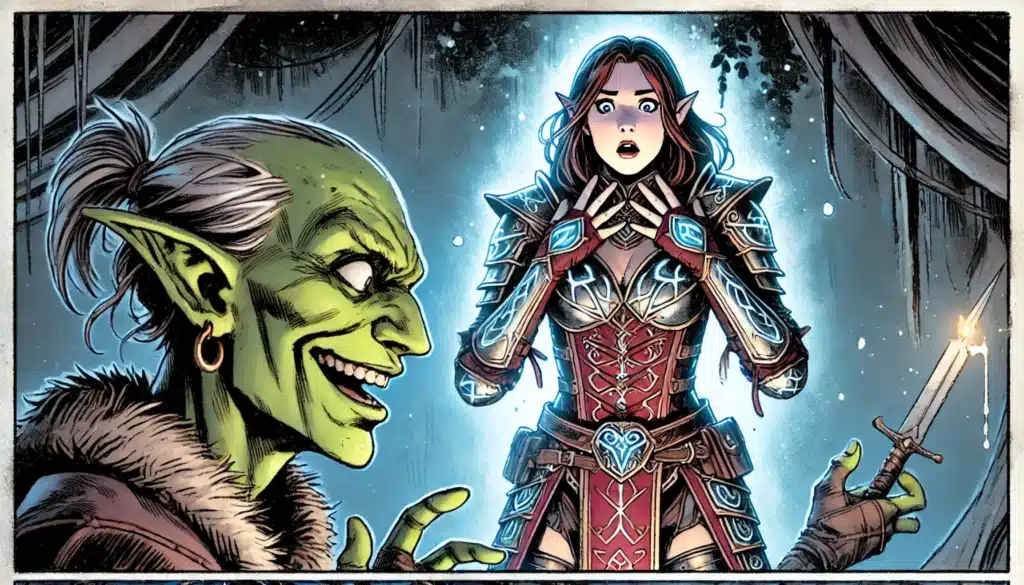
Favored Enemy and Natural Explorer
The Favored Enemy and Natural Explorer features define a Ranger’s connection to the world around them, emphasizing their role as expert hunters and navigators. These two abilities provide distinct advantages in the Ranger’s interactions with creatures and terrain, tailored to enhance their effectiveness in specific contexts. While initially criticized for limited application, recent optional rules, especially from Tasha’s Cauldron of Everything, have diversified how these features can be utilized, broadening their appeal and utility.
Favored Enemy enables Rangers to select a specific type of creature or terrain to specialize against, granting them advantages in combat and tracking. Traditionally, this feature offers bonuses such as additional damage or advantage on tracking checks related to the chosen enemy. However, optional rules allow for more dynamic engagements, such as adding proficiency bonuses to damage rolls or selecting multiple enemy types over time. These changes empower Rangers to adapt their skillset to fit shifting campaign narratives more fluidly.
Natural Explorer, on the other hand, enhances a Ranger’s proficiency in navigating and surviving specific terrains. Originally, it provided benefits like increased travel speed and advantages on checks related to the chosen terrain, which often went underutilized if campaigns didn’t focus on wilderness exploration. With the introduction of optional rules, Rangers can instead choose benefits that broaden their utility, like advantage on initiative rolls or the ability to ignore difficult terrain. These updates ensure the Ranger’s relevance regardless of where adventures lead.
| Feature | Original Rule | Optional Rule | Roleplay Use |
|---|---|---|---|
| Favored Enemy | Bonus on tracking/survival checks | Proficiency bonus to damage rolls | Deep-seated personal vendetta |
| Natural Explorer | Advantage on terrain skill checks | Access initiative advantage | Legendary pathfinder, terrain lore |
| Favored Enemy | Chosen at levels 1, 6, 14 | Chosen at character creation only | Long-standing enmity with species |
| Natural Explorer | Focus on one terrain type | Flexible terrain advantage | Adaptive survival under guidance |
| Favored Enemy | Language of enemy known | Additional languages for ally aid | Spy/ambassador with enemy tribes |
| Natural Explorer | Travel pace/foraging benefits | Mobility benefits on all terrains | Quick-footed and resourceful |
| Favored Enemy | Static bonus/application limit | Dynamic and refreshed application | Tactical adaptability in battles |
| Natural Explorer | Advantage on physical tasks | Increased combat initiative options | Preemptive strike specialist |
| Favored Enemy | Specific to campaign type | General use expanded tools | Versatile hunter/tracker |
| Natural Explorer | Limited to campaign settings | Universal adaptability advantages | Master of travel and survival |
These improvements mean Favored Enemy and Natural Explorer can be adapted to suit campaigns focused more heavily on exploration or combat, enhancing the overall utility and narrative depth. In exploration-heavy campaigns, the Ranger can leverage these features to become indispensable navigators and scouts, steering their party through untamed wilderness with ease. The nuanced application of Natural Explorer ensures they’re always a step ahead of adversaries, utilizing the environment to their advantage.
In more combat-oriented settings, the dynamic Favored Enemy options provided by Tasha’s allow Rangers to home in on priority targets, inflicting devastating blows with increased efficacy. They become vital players in combat strategy, identifying and countering enemy strengths while capitalizing on their weaknesses. By pairing these features with the right spells and gear, Rangers can fine-tune their role as tactical strategists within the party.
⚔️ Fantasy RPG Random Tables Books
Make life as a Gamemaster easier…
If you play Dungeons & Dragons, Pathfinder, or other fantasy RPGs, this
RPG random tables series
is packed with encounters, NPCs, treasure, and more. Available in eBook or print—either way, you’ll have a wealth of adventure ideas at your fingertips.
Ultimately, the refreshed approach to Favored Enemy and Natural Explorer underscores the Ranger’s adaptable nature. Players can adjust these features based on campaign needs, enhancing their ability to participate in a range of adventure scenarios. Whether patrolling ancient forests or battling infernal beasts, Rangers remain vigilant, ever-prepared for the trials of the journey yet to unfold. As we continue, we’ll explore how Rangers’ spell list complements these changes and broadens their tactical repertoire.
Spellcasting and Spell List
The Ranger’s spellcasting is a unique blend of utility, offense, and stealth, threaded through with the elemental magic of their surroundings. Unlike full casters, Rangers rely on a limited spell list that they learn as they reach higher levels, emphasizing strategic deployment rather than sheer spell volume. Starting from the 2nd level, Rangers gain access to spells, initially with a few 1st-level spell slots. As they progress, their spellcasting capacity grows, granting them more slots and access to higher-level spells, capping at 5th-level spells by the 17th level.
Ranger spellcasting focuses on utility spells that enhance their primary abilities. Prepared spells are drawn from the Ranger spell list and swapped out at the end of a long rest. This flexibility allows Rangers to adapt their spell selection to suit the immediate needs of their party and the challenges they face. Despite their limited number of spells, each choice profoundly impacts the Ranger’s role in combat and exploration.
Here are some of the must-have spells for Rangers, categorized by tier and subclass synergy:
- 1st Level:
- Hunter’s Mark: Essential for increasing damage to a marked target, keeping it prepared ensures effectiveness in combat.
- Goodberry: Provides short-term healing and sustenance, crucial for survival in remote areas.
- Jump: Enhances mobility, allowing Rangers to reach difficult positions.
- 2nd Level:
- Pass Without Trace: An invaluable stealth aid, granting a massive boost to stealth checks for the Ranger and allies.
- Silence: Perfect for disabling enemy spellcasters by creating a soundless zone.
- Spike Growth: Controls battlefield positioning by deterring enemy movement through hazardous terrain.
- 3rd Level:
- Conjure Animals: Versatile for both combat and distractions, letting the Ranger summon beasts to assist in battles.
- Lightning Arrow: Converts attacks into powerful area-damage spells during combat.
- Protection from Energy: Mitigates damage from elemental forces, tailored for encounters against specific threats.
- 4th Level:
- Guardian of Nature: Enhances combat prowess, boosting weapon attacks and granting advantage on certain checks.
- Stoneskin: Provides resistance to physical damage, increasing survivability against physical attacks.
- 5th Level:
- Swift Quiver: Maximizes ranged attack potential by facilitating extra ranged attacks per turn.
- Tree Stride: Enhances mobility, allowing movement between trees within range, perfect for forested terrain.
Rangers must carefully manage their limited spell slots and the economy of concentration spells. The ability to maintain spells like “Hunter’s Mark” or “Conjure Animals” relies heavily on concentration, requiring Rangers to balance their active spells with situational demands. Mismanagement can quickly lead to critical gaps in functionality during crucial moments.
The key to effective spellcasting as a Ranger isn’t just about what spells are prepared, but when and how they are deployed. Flexibility and foresight are invaluable, enabling Rangers to switch seamlessly between supporting roles and offensive positions. Planning spell usage around anticipated encounters allows Rangers to conserve resources and maintain operational longevity in prolonged adventures.
Spell selection harmonizes with the Ranger’s physical capabilities, ensuring they remain formidable adversaries whether clashing swords with foes or maneuvering through dense underbrush unseen. As we move forward, exploring the Ranger’s fighting styles will further illuminate how these spellcasting nuances integrate with their combat prowess, crafting a versatile toolkit for the adventurous vigilant.
Fighting Styles
The Ranger’s array of Fighting Style choices is a defining aspect of their combat versatility, allowing them to specialize in distinct forms of combat that complement their role in diverse scenarios. These styles offer mechanical advantages that not only enhance their martial capabilities but also play to the strengths and thematic elements of their character build. From the precision of a marksman to the steadfastness of a melee combatant, the right Fighting Style can significantly impact gameplay, tailoring the Ranger’s approach to battles they will face.
Try my AI Tabletop RPG generators...and an extensive library of content!
Archery stands out as a popular choice, granting a +2 bonus to attack rolls with ranged weapons. This not only boosts the effectiveness of ranged combatants focusing on high DPS (damage per second) output but also synergizes perfectly with spells like “Hunter’s Mark.” An Archery-focused Ranger can dominate the battlefield from a distance, picking off foes with deadly accuracy, making it ideal for builds like the sniper or ranged-support roles.
For those who prefer to be up close and personal, Dueling offers a reliable +2 to damage rolls when wielding a single melee weapon. This style complements melee tanks or those using a shield for extra defense, providing a steady damage increase without sacrificing protection. It pairs well with the Beast Master Ranger, whose companions can engage enemies directly, allowing the Ranger to focus on dealing consistent damage.
The Druidic Warrior option brings a unique twist by allowing the Ranger to tap into a limited selection of Druid cantrips. For hybrid builds, this offers a seamless blend of spellcasting and combat versatility. Cantrips like “Guidance” and “Thorn Whip” provide tactical flexibility and expanded utility, making it an attractive choice for players who envision their Ranger as a spell-augmented scout or support.
The impact of these Fighting Styles goes beyond their immediate benefits, influencing how Rangers are played in the heat of battle and how they prepare for encounters. Each style sets the tone for the Ranger’s tactical approach—whether it’s raining arrows from afar, trading blows in melee, or weaving spells into combat. Understanding and selecting the Fighting Style that aligns with your build’s goals is paramount for maximizing your Ranger’s effectiveness in any campaign.
Fighting Style Recommendations:
- Archery: Best for sniper and ranged builds; enhances hit rate.
- Dueling: Great for sword-and-shield or melee-focused Rangers.
- Two-Weapon Fighting: Superb for dual-wielders; no offhand penalty.
- Druidic Warrior: Ideal for hybrid spellcasters seeking utility and flexibility.
- Defense: Boosts AC, perfect for tanky melee builds.
- Thrown Weapon Fighting: Complements mixed or javelin users.
- Gunner: Supports firearm usage, extends ranged combat range.
- Blind Fighting: Counters invisibility; useful for close-quarters or low-light campaigns.
- Interception: Protects allies, suitable for party-focused Rangers.
- Mariner: Enhances mobility and aquatic combat for seafaring adventures.
- Protection: Benefits shield users, providing reaction-based support.
- Unarmed Fighting: For thematic or non-traditional combat styles.
- Superior Technique: Provides a Battlemaster-like maneuver, diversifying attack options.
- Thrown Weapon Master: Optimizes damage potential of thrown weapons.
Comparing the Ranger’s Fighting Styles to those available to other classes reveals intriguing overlaps and unique distinctions. While Fighters enjoy broader access to multiple styles, often selecting a combination that covers various combat scenarios, Rangers instead focus on a single style that defines their combat identity. Unlike Paladins, who often lean towards styles reflecting their divine prowess, Rangers choose styles that support their dual role as warriors and wilderness protectors.
These styles, carefully chosen, enhance the Ranger’s ability to execute their specific combat strategies effectively. For instance, a Ranger opting for Blind Fighting might excel in environments where ambushes are common or light is scarce. Meanwhile, a Fighter’s use of the same style may aim to mitigate certain vulnerabilities in front-line brawls. By leveraging these nuanced choices, Rangers can carve their niche within any adventuring party, complementing the strengths of their allies while covering potential weaknesses in their group’s tactics.

Best Races and Backgrounds for Rangers
The choice of race and background significantly impacts a Ranger’s optimization, lending them both mechanical advantages and roleplaying depth. Each race presents unique bonuses, abilities, and cultural narratives that can influence a Ranger’s development and thematic expression. Similarly, backgrounds provide skill proficiencies and story elements that weave into the character’s past, impacting how they interact with the world.
Racial features offer mechanical benefits like heightened Dexterity or Wisdom, crucial stats for most Rangers. They also provide resistances, movement options, or thematic abilities that enhance exploration or combat aptitudes. For instance, a Ranger with high Dexterity benefits from increased AC and better attack rolls, while Wisdom supports critical skills like Perception and spellcasting. These factors combine to shape how effectively a Ranger can fulfill their role.
Backgrounds add another layer to a Ranger’s capabilities, furnishing proficiencies in skills or tools that supplement their inherent abilities. Choosing backgrounds that align with the Ranger’s intended role can significantly enhance their functionality within a party. Moreover, they provide roleplaying hooks—stories that give your Ranger depth and motivation. This duality of mechanics and storytelling serves to create rich, multidimensional characters.
Optimal Race Choices
Selecting the right race for your Ranger infuses the character with critical bonuses and advantages. For example, a race that provides a boost to Dexterity and Wisdom will naturally complement the Ranger’s core functions, while thematic synergies can enhance narrative cohesion.
| Race | Stat Bonuses | Racial Abilities | Ranger Synergy |
|---|---|---|---|
| Wood Elf | +2 Dex, +1 Wis | Fey Ancestry, Mask of the Wild | Perfect for stealth-focused Rangers. |
| Halfling | +2 Dex | Lucky, Brave, Nimbleness | Enhances survivability and mobility. |
| Variant Human | +1 Any, +1 Any, Feat | Feat, Additional Skill Proficiency | Customizable for any Ranger build. |
| Githyanki | +2 Str, +1 Int | Psionics, Misty Step | Hybrid combat/spellcasting builds. |
| Firbolg | +2 Wis, +1 Str | Hidden Step, Speech of Beast and Leaf | Supports mystical and beast-friendly roles. |
| Lizardfolk | +2 Con, +1 Wis | Natural Armor, Hungry Jaws | Tactical defensive and survival benefits. |
| Half-Elf | +2 Cha, +1 Any x2 | Darkvision, Skill Versatility | Flexible, suits many Ranger archetypes. |
| Tabaxi | +2 Dex, +1 Cha | Feline Agility, Climber | High mobility and sensory acuity. |
| Aarakocra | +2 Dex, +1 Wis | Flight, Talons | Great for aerial reconnaissance Ranger. |
| Drow (Elf) | +2 Dex, +1 Cha | Superior Darkvision, Drow Magic | Strong in low-light and subterranean campaigns. |
| Kenku | +2 Dex, +1 Wis | Mimicry, Expert Forgery | Intriguing for espionage themes. |
| Triton | +1 Str, +1 Con, +1 Cha | Amphibious, Control Air and Water | Thematically rich for maritime Rangers. |
| Shifter | +1 Dex, +1 Other | Shifting Form, Darkvision | Versatile, with combat flexibility. |
| Goblin | +2 Dex, +1 Con | Fury of the Small, Nimble Escape | Excellent for guerrilla warfare tactics. |
Under classic rules, races like Wood Elves excel due to their natural benefits aligning seamlessly with Ranger proficiencies, offering enhanced stealth and mobility. Custom origin rules further allow for more creativity, enabling players to tailor racial bonuses to best fit their Ranger archetype, broadening the scope of viable choices.
Races supporting melee Rangers prioritize Strength or Constitution alongside Dexterity. Meanwhile, spellcasting-focused Rangers benefit from Wisdom-boosting races, enriching their spell effectiveness. Wood Elves, Variant Humans, and Lizardfolk offer diverse boons catering to both combat and spellcasting, making them exceptional choices across various builds. The Ranger’s adaptability to both natural and combative endeavors is only enhanced by choosing a race that complements their intrinsic strengths or compensates for their vulnerabilities.
Backgrounds with Thematic and Mechanical Value
Background selection infuses a Ranger with additional skills and tool proficiencies, enhancing their capabilities and deepening their narrative. A well-chosen background can complement a Ranger’s build by providing access to skills that are otherwise unavailable or supplementary to their class abilities.
- Outlander: Offers survival and navigational skills—perfectly aligned with the Ranger’s wilderness prowess.
- Hermit: Provides a rich backstory with skills that aid in self-sustenance and discovery.
- Criminal: Pairs well with Gloom Stalkers, enhancing stealth and deception.
- Folk Hero: Amplifies the Ranger’s standing as a local protector.
- Sailor: Offers nautical skills for maritime campaigns and seafaring Rangers.
- Feylost: Ideal for Fey Wanderers with an enigmatic past.
- Urchin: Provides infiltration skills useful in urban settings.
- Entertainer: Adds flair and social skills, creating a Ranger with a public persona.
- Investigator (UA): Complements a detective or urban Ranger theme.
- Haunted One: Supports a dark or mysterious backstory, with thematic depth.
- Acolyte: Explores a spiritual path, suitable for Ranger-Druid hybrids.
- Noble: Positions the Ranger as a guardian of noble interests.
- Warrior: Offers a martial background, reinforcing combat prowess.
- Guild Artisan: Provides utility with crafting or trade skills.
- Spy: Enhances covert operations, ideal for espionage-focused Rangers.
- Noble Knight: Suits a chivalric Ranger role, enhancing leadership skills.
In blending unconventional backgrounds, players can craft Rangers that defy stereotypes. An Urchin might become a city’s protector, leveraging street-wise skills to defend its people. A Sailor could bring the wilderness to the high seas, mastering not just forests but also the vast oceans. These choices lay the groundwork for a character rich with narrative possibilities and mechanical depth, embodying both the heart of a Ranger and their place in the larger world.
By pairing optimal race and background choices, a Ranger evolves into a multifaceted character, ready to engage in the intricate dance of exploration and combat within any campaign. Such thoughtful combinations accentuate their strengths, enhance their weaknesses, and create narratives ripe for exploration. Whether capturing the essence of the wilderness or navigating the complexities of society, the Ranger, well-crafted, invites players into a realm where the untamed and the civilized collide.
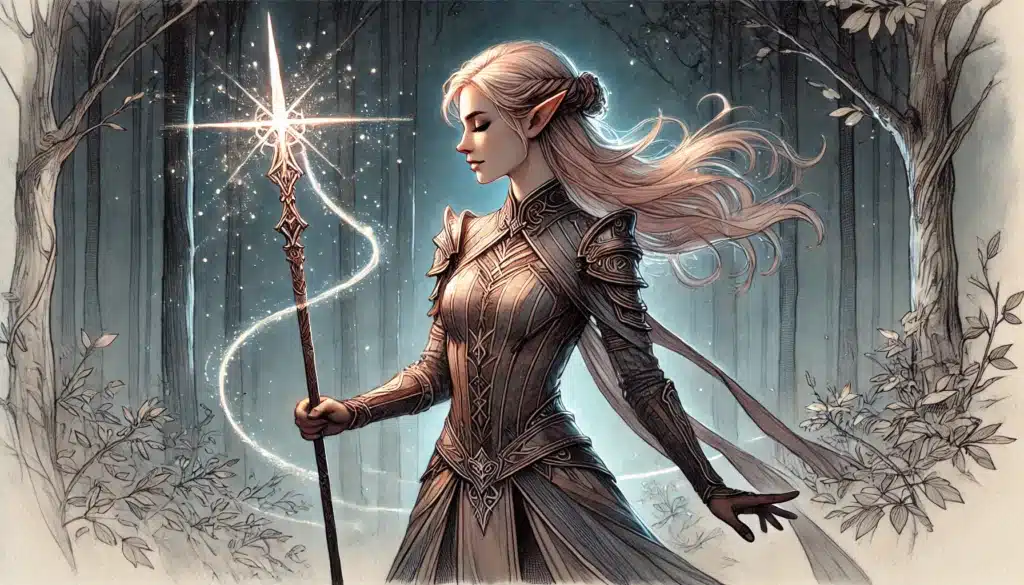
Ranger Subclass Deep Dive
Rangers in D&D 5e are distinctively versatile, and much of this stems from their diverse subclass options. Each subclass introduces unique features and capabilities that shape a Ranger’s identity and role in an adventuring party. Subclasses grant new abilities at key levels—3rd, 7th, 11th, and 15th—allowing Rangers to refine their combat strategies, enhance their spellcasting, or tap into thematic powers that reflect their connection to the natural or mystical world.
⚔️ Fantasy RPG Random Tables Books
Make life as a Gamemaster easier…
If you play Dungeons & Dragons, Pathfinder, or other fantasy RPGs, this
RPG random tables series
is packed with encounters, NPCs, treasure, and more. Available in eBook or print—either way, you’ll have a wealth of adventure ideas at your fingertips.
These subclasses offer a range of power spikes that redefine a Ranger’s contributions to encounters. As they advance, these power bonuses not only enhance the Ranger’s effectiveness in battle but enrich exploration and narrative potential. Some subclasses expand their spell lists with thematic options, granting access to spells that complement their specialized skills. This diversity of choices ensures that any player can find a subclass that matches both their gameplay preferences and storytelling vision.
The core subclasses from the Player’s Handbook (PHB) provide foundational archetypes that have remained popular due to their straightforward, iconic themes. However, with further subclass developments in supplementary books like Tasha’s Cauldron of Everything and Xanathar’s Guide to Everything, Rangers have more opportunities to explore unique and imaginative paths. These newer subclasses often bring more refined or specialized abilities that cater to thematic niches or specific campaign environments.
Player’s Handbook Subclasses
The original subclasses, Hunter and Beast Master, define two fundamental approaches to the Ranger’s role: predator of the wilds and harmonious guardian of beasts. Despite their initial popularity, both have faced criticism and have evolved with subsequent design updates.
| Subclass | Theme | Standout Ability | Ideal Build Pairing |
|---|---|---|---|
| Hunter | Versatile combat prowess | Colossus Slayer | Ranged or melee executioner |
| Beast Master | Animal companionship | Bestial Bond | Hybrid combat/pet synergy |
| Hunter Variant | Expanded options | Horde Breaker (variant) | Crowd control specialist |
| Beast Master Variant | Revised pet rules | Primal Companion | Summoner, enhanced control |
Hunter Rangers embody the quintessential wilderness warrior, excelling in combat through abilities like Colossus Slayer and Horde Breaker, which diversify their offensive tactics. This subclass grants different choices at each power level, allowing the Ranger to tailor their combat style, whether focusing on single-target devastation or managing groups of foes.
Beast Masters forge deep connections with animal companions that fight alongside them. Early iterations struggled with balancing the companion’s power with the Ranger’s progression. The variant rules introduced in Tasha’s offer a reimagined approach, with Primal Companions that scale more effectively with the Ranger’s level, ensuring they remain useful and impactful.
Though accessibility and thematic coherence remain Hunter and Beast Master’s strengths, modern updates have improved their mechanical effectiveness, making them reliable entry points for newcomers and veterans alike. These subclasses remain beloved for their elemental simplicity and the classic appeal of a Ranger’s battle against, or alongside, nature’s creatures.
Tasha’s and Xanathar’s Subclasses
In newer expansions, subclasses like the Swarmkeeper, Fey Wanderer, Gloom Stalker, Monster Slayer, and Horizon Walker broaden the Ranger’s horizons, offering innovative abilities and thematic depth. These options cater to specific playstyles and campaign settings, allowing Rangers to specialize in unique aspects of adventuring life.
- Swarmkeeper: Ideal for characters drawn to insect or nature themes, they wield a mystical swarm as both shield and weapon.
- Fey Wanderer: Offers a mystical connection to the Feywild, with abilities that charm or confuse enemies.
- Gloom Stalker: Thrives in shadowy environments, gaining advantages in ambush or subterranean campaigns.
- Monster Slayer: Designed for campaigns with significant magical threats, focusing on neutralizing the abilities of supernatural foes.
- Horizon Walker: Travel through the planes, great for campaigns with extraplanar themes or travel-heavy narratives.
Each subclass offers its own strengths and spell support, tailoring the Ranger’s powers to fit particular party roles or campaign contexts. They often modify or expand upon core Ranger abilities, providing a strategic overlay that can heavily influence how a character engages with the world around them.
The breadth of these subclasses offers Rangers opportunities to fulfill varied roles, from the stealthy assassin to the mystical guardian, or the planar explorer. These thematic options present flexibility in playstyle while maintaining the core Ranger identity of adaptability and environmental mastery, making them indispensable in any campaign that features rich narrative landscapes or complex tactical challenges.
Ranking Subclasses by Role
Evaluating Ranger subclasses requires careful consideration of a variety of factors, including combat strength, utility, defense, exploration capabilities, and their potential for narrative richness. These criteria ensure that a Ranger isn’t just mechanically effective but also contributes meaningfully to the campaign’s story and dynamics. Each subclass offers distinct advantages and thematic flair that caters to specific playstyles and party needs.
Combat strength measures how effectively a subclass can deal damage and control the battlefield, with top choices often offering unique abilities or spells that increase offensive capabilities. Utility emerges from how a subclass supports the party outside of combat, often through skills, spells, or features that provide advantages in problem-solving or diplomacy. Defense accounts for the subclass’s ability to withstand damage or protect allies, both essential for survival in difficult encounters.
Exploration assesses how a subclass enhances the Ranger’s natural ability to traverse and thrive in diverse settings, while narrative hooks consider the depth of storytelling potential each subclass inherently supports. These can include inherent conflicts, alliances, or goals that enrich roleplay, further embedding the Ranger into the fabric of the adventure.
| Subclass | Power | Flavor | Roleplay | Spell Synergy | Ease of Use |
|---|---|---|---|---|---|
| Gloom Stalker | High | Dark | Medium | Strong | Moderate |
| Monster Slayer | Medium | High | High | Moderate | Easy |
| Fey Wanderer | Medium | Ethereal | High | High | Moderate |
| Beast Master | Low | Classic | Medium | Weak | Moderate |
| Hunter | Medium | Classic | Medium | Moderate | Easy |
| Swarmkeeper | High | Swarm | High | Strong | Moderate |
| Horizon Walker | Medium | Planar | High | Strong | Moderate |
| Drakewarden | High | Draconic | Medium | Strong | Complex |
| Phantom Rogue | Medium | Haunting | High | Moderate | Complex |
In assessing these factors, it becomes clear that subclasses like Gloom Stalker rank highly in power thanks to their ability to dominate dark environments, making them formidable opponents in dungeons or nighttime ambushes. Their synergy with invisibility and initiative bonuses makes them reliable damage dealers with strong opening turns. Swarmkeepers, with their thematic embrace of a mystical swarm, excel in providing both offensive and defensive benefits, creating a unique playstyle defined by versatility.
Conversely, Monster Slayer and Fey Wanderer, while possibly less powerful in raw damage output compared to others, offer significant roleplay and narrative appeal. Their abilities to interact with magical creatures or charm opponents open up new diplomatic avenues and enrich the campaign’s storytelling layers. They provide a balance between combat, exploration, and social encounters, often rewarding creative problem-solving.
Try my AI Tabletop RPG generators...and an extensive library of content!
Matching subclass to a character concept demands a nuanced approach, understanding not just the numbers game but also how these mechanics serve the larger narrative. A Gloom Stalker might find their place in a campaign marked by intrigue and shadow, whereas a Fey Wanderer may flourish in tales steeped in mysticism or fairy tale elements. Ultimately, the best subclass choice aligns with a player’s vision for their character, ensuring that both mechanical proficiency and narrative depth are achieved in harmony.
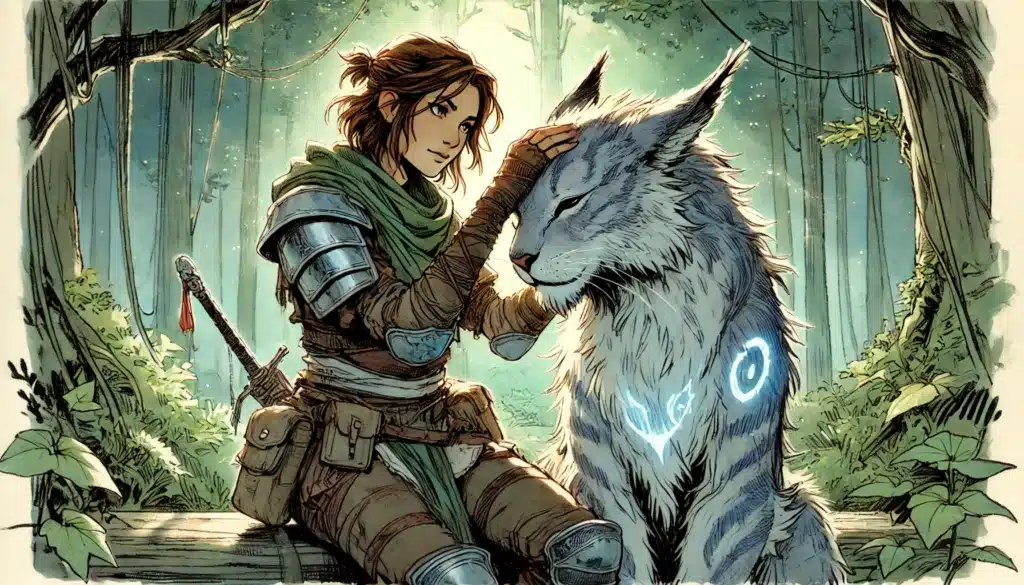
Feats and Multiclassing Rangers
Feats and multiclassing stand as critical tools in a Ranger’s arsenal for those seeking to optimize performance and expand capabilities. These options allow Rangers to tailor their skills beyond the limitations of their base class, ensuring they can adapt to the ever-changing demands of adventure. Feats offer incremental yet impactful benefits that can significantly enhance a Ranger’s specialized roles, while multiclassing opens pathways to synergize abilities from different classes.
Feats present opportunities to specialize in areas that align with or supplement a Ranger’s inherent strengths. Whether augmenting combat effectiveness, spellcasting prowess, or utility skills, choosing the right feat can transform a Ranger into a more formidable opponent or invaluable party asset. Consideration of when to choose feats over Ability Score Improvements (ASIs) becomes a strategic decision, influenced by campaign requirements and party composition.
Multiclassing, on the other hand, provides a structural enhancement by integrating other class benefits into the Ranger’s repertoire. With careful selection, Rangers can gain access to special abilities, spells, and proficiencies that bolster their versatility and tactical depth. However, this choice necessitates a thoughtful approach to balance subclass features, spell progression, and core functionality. Over-dipping into another class may dilute a Ranger’s identity, so it’s vital to keep the character’s thematic essence intact.
Best Feats for Rangers
Feats can significantly define a Ranger’s path, offering distinct advantages that cater to specific combat or exploration needs. Here are some top selections:
- Sharpshooter: Great for ranged builds; ignores long-range penalties and adds substantial damage.
- Crossbow Expert: Allows firing in close quarters without disadvantage, ideal for dual-wield ranged builds.
- War Caster: Boosts concentration checks; perfect for Rangers frequently maintaining spells.
- Alert: Provides initiative boost, ensuring Rangers act early in combat.
- Mobile: Enhances maneuverability, allowing striking and retreating without opportunity attacks.
- Tough: Offers increased hit points, improving survivability in dangerous encounters.
- Skill Expert: Grants expertise in crucial skills, enhancing exploration and survival tactics.
- Magic Initiate: Accesses low-level spells from other classes, broadening spell utility.
- Fey Touched: Grants casting of “Misty Step” and another 1st-level spell, ideal for strategic repositioning.
- Resilient (Con): Increases Constitution and fortifies concentration checks for spells.
- Lucky: Provides rerolls for critical moments, increasing clutch plays.
- Defensive Duelist: Enhances defense when wielding finesse weapons, ideal for melee Rangers.
- Polearm Master: Complements melee builds focusing on reach and reaction attacks.
- Elven Accuracy: Boosts accuracy with advantage, perfect for precision-based bespelling Rangers.
- Observant: Heightens perception, invaluable for scouting and awareness.
- Ritual Caster: Accesses extra utility spells, beneficial for downtime and preparation.
Feats are chosen based on strategic gaps or strengths you wish to enhance. ASIs offer a straightforward increase in key stats, crucial for maxing out Dexterity or Wisdom, yet feats create opportunities for niche specialization and tactical diversity. In high-pressure campaigns, the situational advantages from feats often translate into impactful decision-making on and off the battlefield.
Multiclass Options and Synergies
Multiclassing allows Rangers to infuse their abilities with complementary traits from other classes, expanding their potential in both combat and roleplaying contexts. These combinations can redefine a Ranger’s role, enhancing their skills and powers with additional tools that serve varied campaign needs.
| Multiclass Combo | Synergy | Recommended Level Split | Ideal Build |
|---|---|---|---|
| Ranger 5 / Fighter 2 | Access to Action Surge | 5/2 | Archers, melee burst |
| Ranger 3 / Rogue 3 | Sneak Attack and Cunning Action | 3/3 | Stealth and trick builds |
| Ranger 6 / Druid 4 | Spell diversity, Wild Shape | 6/4 | Nature-based spellcasters |
| Ranger 3 / Cleric 2 | Divine spells, healing options | 3/2 | Support and healing roles |
| Ranger 8 / Barbarian 2 | Rage enhances melee durability | 8/2 | Tanky melee Ranger |
| Ranger 5 / Paladin 2 | Divine Smite for burst damage | 5/2 | Melee burst and defense |
| Ranger 10 / Sorcerer 1 | Extra spell slots, meta-magic | 10/1 | Spell versatility |
| Ranger 4 / Bard 3 | Bardic inspiration, support | 4/3 | Utility and charisma-based |
| Ranger 6 / Warlock 2 | Pact magic, invocations | 6/2 | Arcane blend for spells |
| Ranger 7 / Monk 3 | Extra mobility, KI abilities | 7/3 | Speed and hand-to-hand |
While multiclassing unlocks new avenues for power and creativity, it is vital to ensure such combinations complement the Ranger’s primary role rather than overshadow it. Avoid over-dipping into other classes without clear rationale, as it can lead to diluted characters with split focus. Instead, seek balance, maintaining the core essence of the Ranger while leveraging new abilities to magnify their impact within the party structure.
⚔️ Fantasy RPG Random Tables Books
Make life as a Gamemaster easier…
If you play Dungeons & Dragons, Pathfinder, or other fantasy RPGs, this
RPG random tables series
is packed with encounters, NPCs, treasure, and more. Available in eBook or print—either way, you’ll have a wealth of adventure ideas at your fingertips.
Exploring feats and multiclass strategies with intention not only elevates a Ranger’s tactical prowess but adds layers to their character’s narrative journey. These options invite experimentation, granting players the freedom to align mechanical efficacy with personal storytelling aspirations, thus enriching the gaming experience holistically.
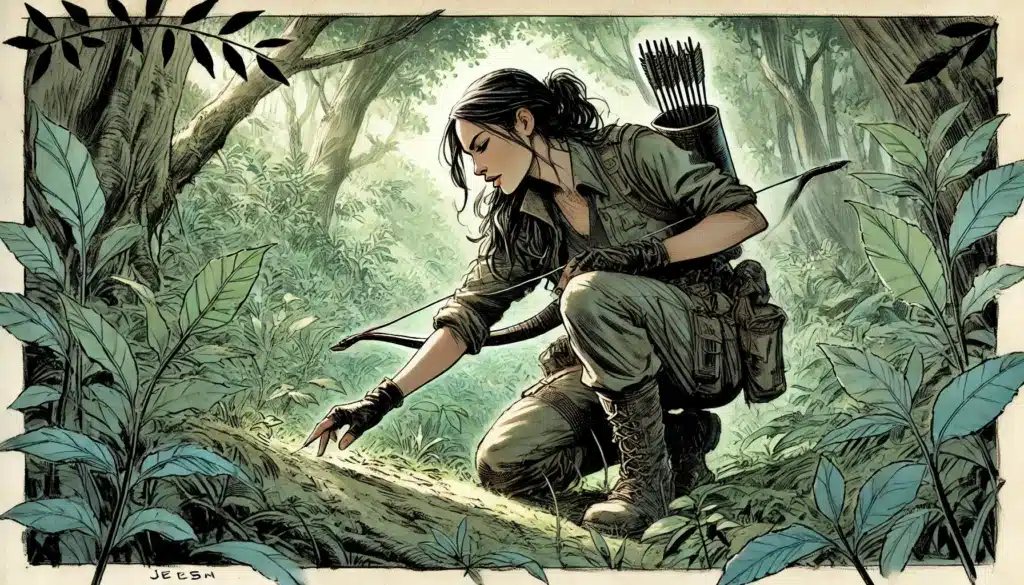
Advanced Ranger Tactics and Playstyle
Mastering the Ranger class in D&D 5e requires more than just understanding their abilities; it demands strategic insight into how to engage effectively in combat, exploration, and party dynamics. Rangers excel in roles that require precision, adaptability, and a keen understanding of natural environments. They harness these strengths to control the battlefield, support their allies, and thrive in challenging landscapes.
To think tactically as a Ranger means leveraging their versatile skill set to capitalize on situational advantages, whether through superior positioning, spell timing, or the effective use of class features. Rangers can switch between roles as damage dealers, scouts, and support, providing a flexible contribution to any adventuring party. But here’s the thing: while Rangers are versatile, their success hinges on thoughtful planning and anticipation of their environment and opponents.
Combat Tactics by Build
Rangers excel in various combat builds, each offering unique tactical options. From precision shooting to melee ambushes, understanding these styles enhances a Ranger’s effectiveness in battle.
- Kiting: Utilize movement to maintain distance; essential for ranged Rangers against melee-focused enemies.
- Ambushing: Use Hide actions and spells like “Pass Without Trace” to strike first and hard then vanish.
- Battlefield Control: Employ spells like “Spike Growth” or “Plant Growth” to restrict enemy movement.
- Support Healing: Incorporate spells like “Cure Wounds” or “Goodberry” for emergency healing as needed.
- Pet Usage: Coordinate with a Beast Master’s companion for flanking bonuses and tactical advantages.
Here are twenty tactical ideas for different Ranger builds:
- Climb and Shoot from Elevation: Gain height advantage for better visibility and increased hit chance.
- Hide-and-Cast Combos: Hide after casting non-concentration spells to maintain stealth.
- Use Ensnaring Strike Before Enemy Spellcasters Act: Disrupt their ability to cast by restraining them early.
- Focus Fire on Weaker Enemies: Quickly eliminate lower health enemies to reduce opponents.
- Divide and Conquer: Use terrain to split enemy forces and handle them piecemeal.
- Threat Assessment: Prioritize targets affecting the most significant threat to your party.
- Leverage Difficult Terrain: Force enemies into difficult terrain effects to gain combat superiority.
- Retreat and Reposition: Use spells like “Misty Step” to escape encirclements or maintain range.
- Deploy Decoys or Illusions: Use spells to create distractions or mislead enemies.
- Engage in Hit-and-Run Tactics: Attack quickly and retreat to avoid counter-attacks.
- Overwatch the Field: Use spells and ranged attacks to cover key areas or allies.
- Stagger Opponents with Terrain Manipulation: Temporarily immobilize threats.
- Interrupt Spellcasters: Target enemy casters with silencing effects or rapid damage.
- Impose Disadvantage with Cover: Use natural cover to penalize enemy attack rolls.
- Coordinate with Party Synergy Moves: Act in tandem with allies’ abilities for maximum efficiency.
- Exploit Vulnerabilities: Use spell effects to lower enemy defenses before launching an assault.
- Switch Weapons for Close or Long Range: Adapt your attacks based on enemy proximity.
- Maximize Stealth Opportunities: Evade detection to gain surprise rounds.
- Bait and Ambush: Lure enemies into vulnerable positions before attacking.
- Snipe Priority Targets Early: Focus high damage on leaders or critical threats immediately.
Incorporating these tactics, Rangers become not just participants but architects of battle outcomes. Their ability to adapt tactics to the flow of combat and tailor responses to specific threats or ally needs defines their role as strategic linchpins in any engagement.
Exploration and Utility Role
Beyond combat, Rangers are unparalleled explorers and scouts, utilizing their class skills and abilities to lead parties through diverse and challenging terrains. Their knowledge of nature and survival instincts make them indispensable for navigating unfamiliar environments and identifying hidden dangers.
| Exploration Challenge | Matching Spell/Class Ability | Party Benefit | Roleplay Twist |
|---|---|---|---|
| Dense Forest | Pass Without Trace | Stealth advantage, avoids detection | Communicate with forest creatures |
| Mountain Ascent | Climb or Fly options | Safe travel over obstacles | Leave markings for future explorers |
| Desert Crossing | Goodberry, Water Finding | Sustain resources, avoid fatigue | Interpret ancient desert maps |
| Arctic Expeditions | Cold Resistance, Survival | Endure harsh climates | Forge friendships with polar tribes |
| Urban Ruins | Investigation, Perception | Locate hidden passages or traps | Connect with urban underworld |
| Underwater Travel | Water Breathing, Swimming | Access submerged locations | Befriend local aquatic life |
| Feywild Circles | Fey Ancestry, Arcane Knowledge | Navigate magical barriers | Decode ancient fairy tales |
| Cavernous Mines | Echolocation, Map Proficiency | Navigate natural and manmade caverns | Trade with underground dwellers |
| Cursed Lands | Detect Magic, Dispel Abilities | Neutralize harmful enchantments | Work with a spirit guide |
| Planar Portals | Planar Magic, Horizon Trekking | Access extra-dimensional realms | Form alliances with planar beings |
Rangers’ expertise in travel and terrain ensures the party benefits from efficient movement and resource management. Their abilities often reduce travel time, conserve supply usage, and increase the party’s overall adaptability to environmental threats.
By maximizing the Ranger’s exploration skills, parties can gain strategic advantages, whether by avoiding conflicts altogether or finding secured paths and hidden treasures. The stories they uncover and connections they make lead to rich, intertwined narratives with the world’s environment and its inhabitants, setting the stage for memorable interactions and adventures.
Roleplaying the Ranger
Creating a compelling Ranger involves exploring their personality beyond their mechanical abilities. Each Ranger carries the potential for a unique story, shaped by their experiences, traits, and quirks. Whether as loners, guardians, scouts, or beast-friends, Rangers blend skills with character depth, emphasizing themes of independence, nature, and protection.
To cultivate engaging roleplay, consider these character details:
- Never Sleeps Under a Roof: Reflects their comfort in the open air.
- Marks Trees as Breadcrumbs: Keeps a trail for safety or return journeys.
- Keeps a Journal of Animal Encounters: Cataloguing wildlife motivates learning and respect.
- Whittles Figures from Found Wood: Engages in craftwork to connect with surroundings.
- Uses Animal Sounds for Communication: Facilitates silent communication with allies.
- Wears a Collection of Found Feathers: Honors past adventures and creatures met.
- Carries a Map of Their Travels, Updating with Each Region: Chronicles their journey.
- Describes Distant Places Through Poetry: Cultivates artistry by capturing experiences.
- Befriends Local Strays and Wildlife: Builds rapport with nature wherever they go.
- Avoids Starting Fires Except in Emergencies: Respects and fears wildfire risks.
- Speaks with Ghosts of the Forest: Claims connections to spirits around them.
- Cherishes a Totem of Personal Significance: Bears a symbol of past triumphs.
- Always Takes the Left Path: Follows personal superstitions when choosing direction.
- Trusts a Specific Type of Bird to Guide Them: Follows an omen for direction.
- Tells Stories of Past Heroes to Inspire Allies: Uses tales to foster courage.
These hooks enrich the narrative and provide meaningful interactions with the world and fellow adventurers. When roleplaying, such quirks and habits inform not just how a Ranger acts but why they act as they do, weaving their personal stories into the fabric of the campaign.
Roleplay choices can also align with mechanical decisions, such as selecting a favored terrain that fits their backstory or a favored enemy that connects with past experiences. Leveraging these elements creates a multifaceted Ranger who not only excels in combat and exploration but also tells a compelling story in the grand tapestry of adventuring life.
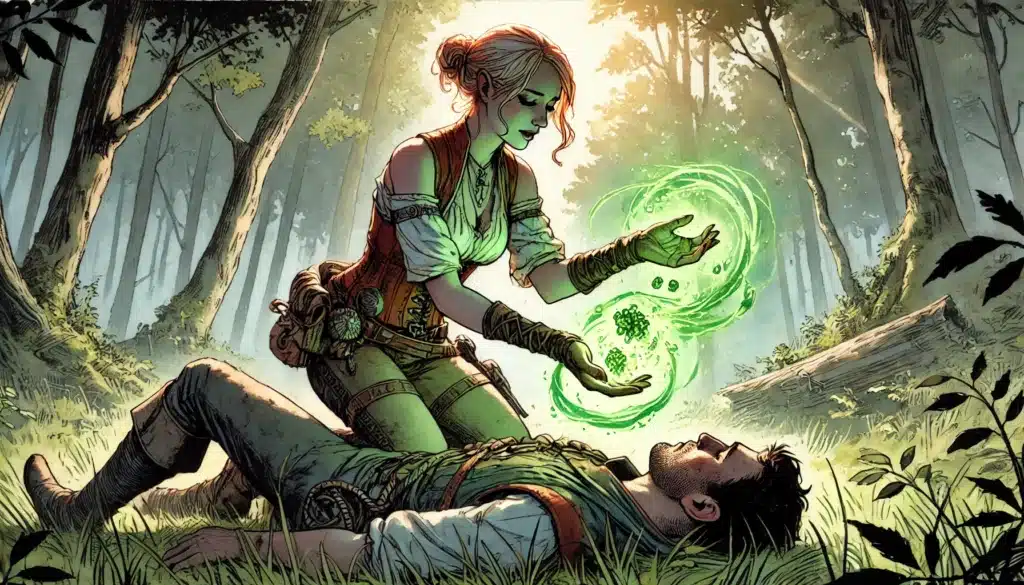
Sample Builds and Starting Advice
Creating a viable and engaging Ranger character involves careful consideration of abilities, race, background, and gear selection. As players embark on their journey with a Ranger, starting choices can set the foundation for their character’s effectiveness and role within the party. This section offers guidance on crafting beginner-friendly builds, as well as exploring more niche or advanced concepts for experienced players.
Rangers are most effective when aligned with their strengths, focusing on their prowess in ranged combat, stealth, and wilderness survival. Whether stepping into the world for the first time or delving into rich thematic elements, a well-rounded approach ensures the Ranger remains adaptable and potent throughout their leveling progression.
Beginner-Friendly Build
For new players looking to create a straightforward and effective Ranger, focusing on a Wood Elf Archer utilizing the Beast Master or Hunter subclass provides an excellent starting point. This build emphasizes ease of use, reliability, and fun exploration of the class’s core strengths.
- Level 1-5 Choices:
- Race: Wood Elf, benefiting from +2 Dexterity, +1 Wisdom, darkvision, and the Mask of the Wild feature for increased stealth.
- Stats: Prioritize Dexterity, followed by Wisdom and Constitution for survivability and spellcasting.
- Fighting Style: Choose Archery to maximize ranged attack rolls, making the most of your longbow proficiency.
- Subclass: Opt for Hunter to gain Colossus Slayer or Horde Breaker at level 3, providing flexibility in combat scenarios.
- Feats: At higher levels, consider taking Sharpshooter to enhance damage output with ranged attacks.
- Spell Selection:
- 1st Level: “Hunter’s Mark” for added damage, “Goodberry” for healing and sustenance.
- 2nd Level: “Pass Without Trace” for party-wide stealth boosts.
- 3rd Level: Introduce “Conjure Animals” or “Lightning Arrow” for tactical expansion in combat.
This build focuses on a balance of combat and utility, using the Wood Elf’s natural proficiencies to augment Ranger abilities. The chosen spells and subclass features provide a robust toolkit for handling diverse scenarios, whether tracking through the wilderness or confronting formidable foes.
For those interested in adapting the build post-level 5, consider expanding into more thematic spell choices or integrating multiclass options for additional depth. Embarking on new adventures with this Ranger archetype encourages players to explore the wilds with confidence, while still maintaining flexibility and adaptability in the face of unknown threats.
Niche or Advanced Builds
For players seeking more specialized or thematic Ranger builds, combining unique subclasses and backgrounds can yield intriguing results. These advanced concepts dive deeper into specific roles or storytelling vehicles, allowing for creative expression and strategic deviation from typical archetypes.
| Build Name | Theme | Subclass Choice | Tactical Niche |
|---|---|---|---|
| Trapper | Hunter’s Cleverness | Gloom Stalker | Specializes in ambushes and traps |
| Ranger-Knight | Chivalric Defender | Fey Wanderer | Protects allies, embodies nobility |
| Fey Scout | Mystical Harbinger | Horizon Walker | Delves into extraplanar knowledge |
| Bounty Hunter | Relentless Pursuit | Monster Slayer | Targets single powerful foes |
| Sniper | Precision Shooter | Hunter | Dominates long-range combat |
| Beast Whisperer | Animal Affinity | Beast Master | Focuses on animal support roles |
| Shadowblade | Dark Assassin | Gloom Stalker | Excels in stealth and shadowy realms |
| Wild Guardian | Nature’s Protector | Swarmkeeper | Protects nature with mystical swarms |
| Planar Nomad | Cosmic Wanderer | Horizon Walker | Masters traversal of planes |
| Elementalist | Elemental Balance | Drakewarden | Wields elemental powers |
| Fey Trickster | Illusion and Charms | Fey Wanderer | Manipulates with charm and cunning |
| Druid’s Ally | Nature’s Partner | Druidic Warrior | Blends spells and martial prowess |
These builds encourage breaking traditional stereotypes and embracing a broader range of playstyles. By combining unconventional subclass and background choices, players can craft Rangers that fill unique roles within their parties, providing fresh tactical options and enriching the campaign’s narrative scope.
Embrace the creative possibilities when constructing niche builds. Whether embodying a mystical guardian of nature or a shadowy stalker traversing forgotten realms, each Ranger becomes a distinct entity with their own narrative hooks and adventuring goals. This approach not only enhances gameplay but also deepens roleplaying opportunities, creating a richer tapestry of experiences in the world of Dungeons & Dragons.
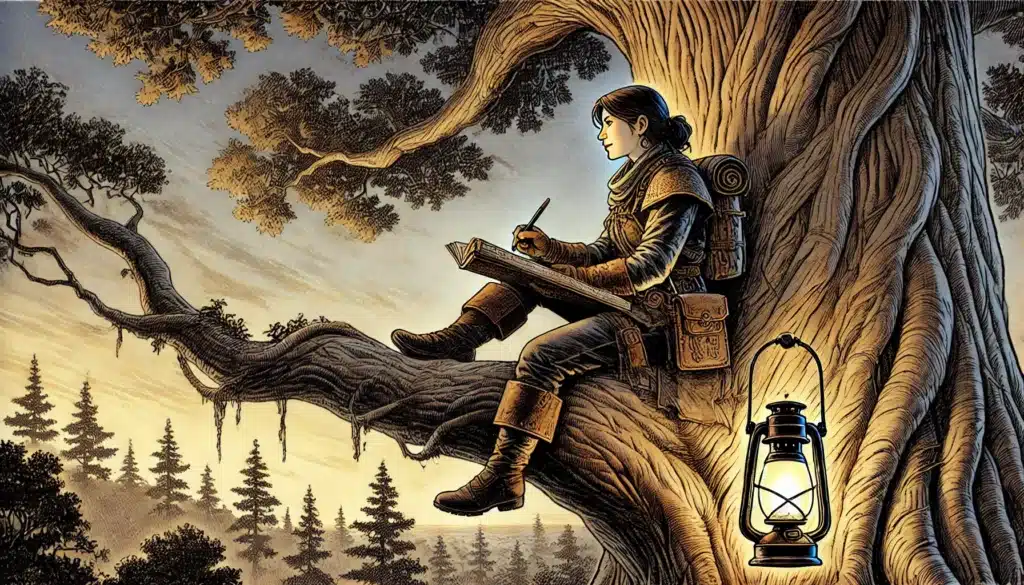
DND Plot Hooks Centered Around Ranger Characters
Rangers are inherently tied to the natural world and its mysteries, making them ideal protagonists for various plot hooks throughout all levels of gameplay. Their unique abilities lend themselves well to adventure hooks steeped in wilderness survival, exploration, and elemental challenges. Below are tailored plot hooks designed for low, mid, and high-level Ranger characters, each encouraging the exploration of their skills and character depth.
⚔️ Fantasy RPG Random Tables Books
Make life as a Gamemaster easier…
If you play Dungeons & Dragons, Pathfinder, or other fantasy RPGs, this
RPG random tables series
is packed with encounters, NPCs, treasure, and more. Available in eBook or print—either way, you’ll have a wealth of adventure ideas at your fingertips.
Low-Level D&D Ranger Plot Hooks
Low-level Rangers are often at the forefront of burgeoning adventures, serving as protectors of their communities and explorers of the wilds. As they embark on their first quests, these characters face the pressing challenges of the natural world, uncovering mysteries that lie just beyond their village’s borders. The plot hooks outlined below are tailored for low-level play, providing opportunities for new Rangers to dive into thrilling encounters while showcasing their unique skills and the bond they share with nature.
The Vanishing Village
In a remote village surrounded by dense forests, townsfolk have begun to disappear without a trace. The locals, desperate for answers, turn to the Rangers to investigate the strange occurrences. As they navigate through the forest, the Ranger may uncover ancient druidic magic gone awry or a malevolent fey creature inadvertently causing chaos in the area.
Highwaymen in the Woods
Travelers along a merchant route have been plagued by a band of ruthless highwaymen. The Ranger is sought after to track down the criminals using their superior tracking skills. This adventure allows them to employ their stealth and combat talents, revealing deeper motivations from the highwaymen and potential links to larger threats that may lie ahead.
Mid-Level D&D Ranger Plot Hooks
As Rangers progress in their journeys, they find themselves navigating more complex landscapes both literally and figuratively. Mid-level adventures elevate their connection with the wilderness, challenging them to confront elemental forces, uncover hidden druidic legacies, and engage with the moral dilemmas that arise when nature’s balance is disrupted. These plot hooks invite Rangers to leverage their unique abilities and understanding of the natural world, propelling them into quests that test their skills and deepen their narrative significance within the campaign. Here are some intriguing mid-level plot hooks tailored for Ranger characters:
The Elemental Imbalance
Natural disasters disrupt the usual balance of the environment—a drought in one region leads to flooding elsewhere. The local druids suspect that elemental spirits are fighting against each other, and the ranger’s connection with nature makes them a perfect liaison. They must journey to the Elemental Plane to broker peace among the conflicting forces or to recover artifacts that restore balance.
The Lost Druid Circle
A renowned druid circle has gone silent, and wild magic is causing the forest to become perilous. The Ranger, being attuned to nature, takes on the responsibility of uncovering what happened. This quest could involve face-offs with mutated creatures who were once peaceful denizens of the forest or rescuing captured druids from an encroaching threat, leading to allies and rapid development as a protector of the wild.
High-Level D&D Ranger Plot Hooks
As Rangers reach the pinnacle of their skills and experiences, their adventures become grander in scale and complexity, often intertwining with the very fabric of the world around them. High-level plot hooks challenge these seasoned warriors to confront not only physical threats but also moral dilemmas and profound changes in the natural order. With their deepening connection to the wilderness and heightened abilities, they are called upon to tackle epic quests that test their resolve, understanding, and adaptability. These plot hooks set the stage for thrilling adventures that can shape the fate of realms and redefine the Ranger’s role as a guardian of balance and harmony in an ever-evolving landscape.
Hunt for the Beast
A legendary beast threatens the kingdom, rumored to possess unique magical abilities. Tasked with hunting it down, the Ranger must delve deep into the wilderness that the creature calls home. This adventure could twist into a quest that reveals the beast is guardian spirit forced into violence due to an imbalance in nature, offering themes of redemption and deeper moral quandaries.
The Shattered Wilds
An ancient forest, thought to be a bastion of protection, begins to rot and decay, impacting the region’s natural magic and the well-being of its inhabitants. As a Ranger who thrives in their surroundings, players must rally allies, explore long-lost paths, and confront sinister forces seeking to corrupt nature itself. This high-stakes adventure melds politics, myth, and a race against time to restore a waning balance before the corruption spreads too far.
These Ranger-centered D&D plot hooks enrich the party’s narrative experience, providing opportunities to engage with the complexity of nature’s balance while spotlighting the character’s unique skill sets and influences on the world around them.
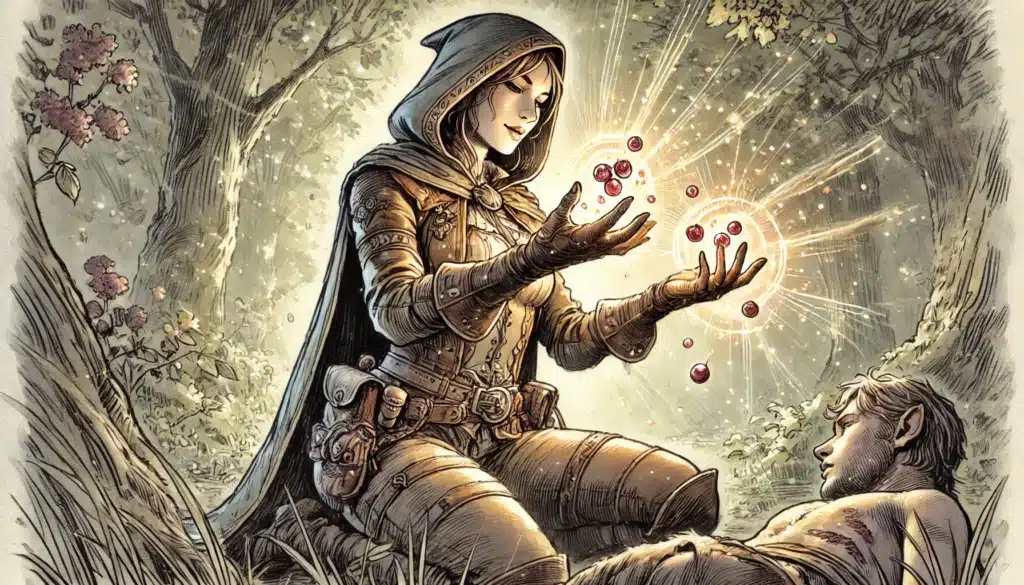
Final Thoughts on Mastering the Ranger Class
The Ranger class in D&D 5e, when played with intent and creativity, emerges not just as a master of the wilderness but as a versatile and dynamic force within any adventuring party. While the Ranger has historically struggled with a reputation of being less powerful compared to other classes, modern updates—such as those found in Tasha’s Cauldron of Everything—have enriched their capabilities, enhancing their combat viability and broadening their roleplaying potential.
Rangers shine when their strengths are leveraged with purpose: their ability to blend martial prowess with spellcasting, combined with a unique affinity for exploration and survival, positions them well for campaigns ranging from wilderness treks to urban investigations. Their adaptability ensures they can thrive in any setting, whether navigating planar portals or unraveling political plots.
It’s crucial for players to embrace both the mechanical power and narrative depth of the Ranger. This involves not only optimizing character builds for maximum efficiency in battle but also weaving a rich personal story that interacts meaningfully with the campaign’s environment. Every decision, from spell preparation to roleplaying quirks, should reinforce the Ranger’s identity as a bridge between civilization and the wild, a guardian of balance and order in a world of chaos.
Encouraging players to explore the vast potential within the Ranger class means acknowledging its nuances and intricacies. Whether through the careful selection of combat tactics, the thoughtful integration of multiclass synergies, or the flavor added by personal roleplay choices, each aspect contributes to a comprehensive understanding of what makes Rangers a unique and rewarding class to play.
Try my AI Tabletop RPG generators...and an extensive library of content!
As you embark on your adventures as a Ranger, remember to approach each challenge with the heart of a survivor and the mind of a tactician. By prepping spells carefully, collaborating with party members to exploit strengths, and embracing the wild, tactical soul of the Ranger, you not only master the class but uncover the boundless possibilities of the world you adventure in.
⚔️ Fantasy RPG Random Tables Books
Make life as a Gamemaster easier…
If you play Dungeons & Dragons, Pathfinder, or other fantasy RPGs, this
RPG random tables series
is packed with encounters, NPCs, treasure, and more. Available in eBook or print—either way, you’ll have a wealth of adventure ideas at your fingertips.

